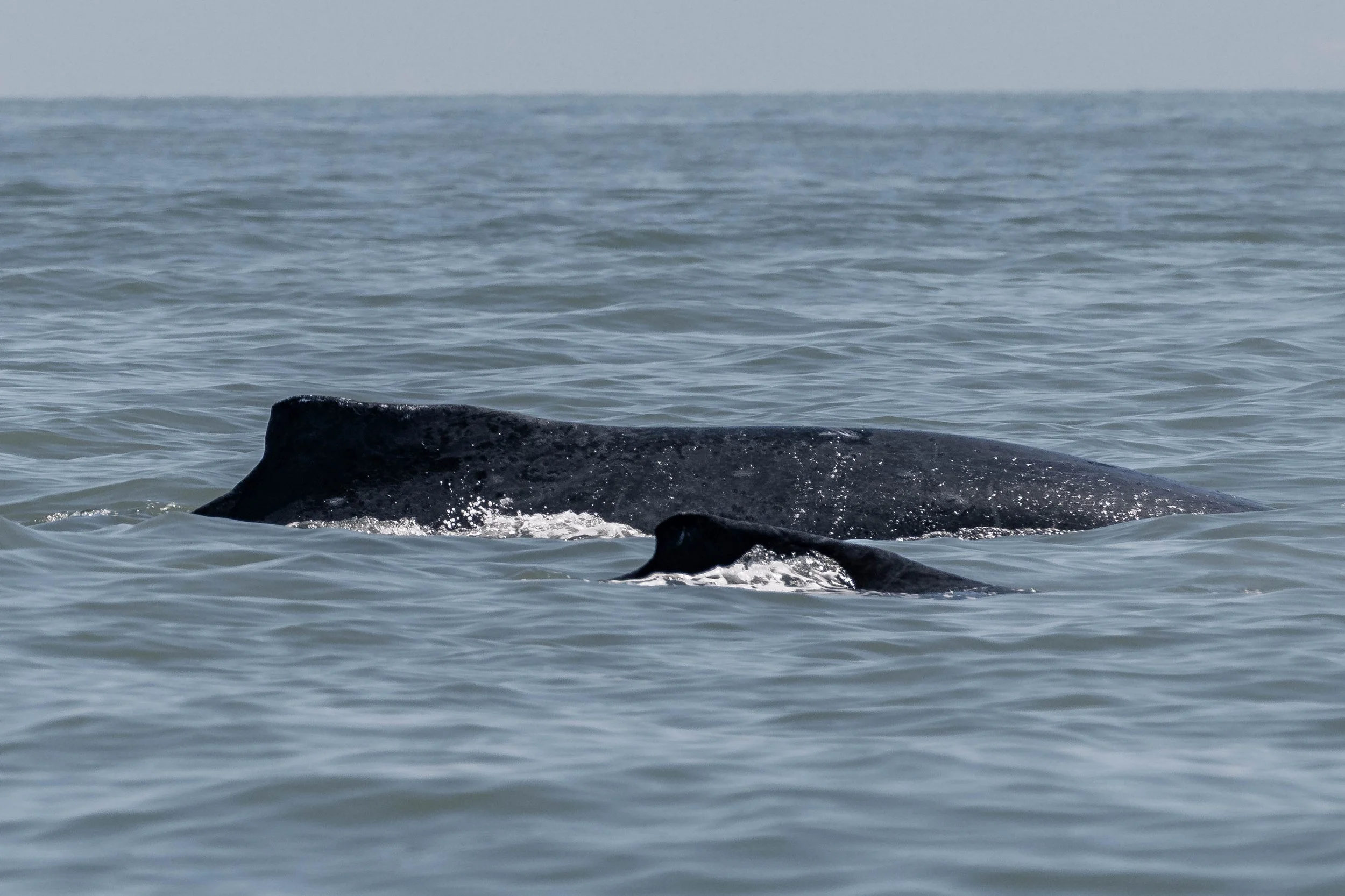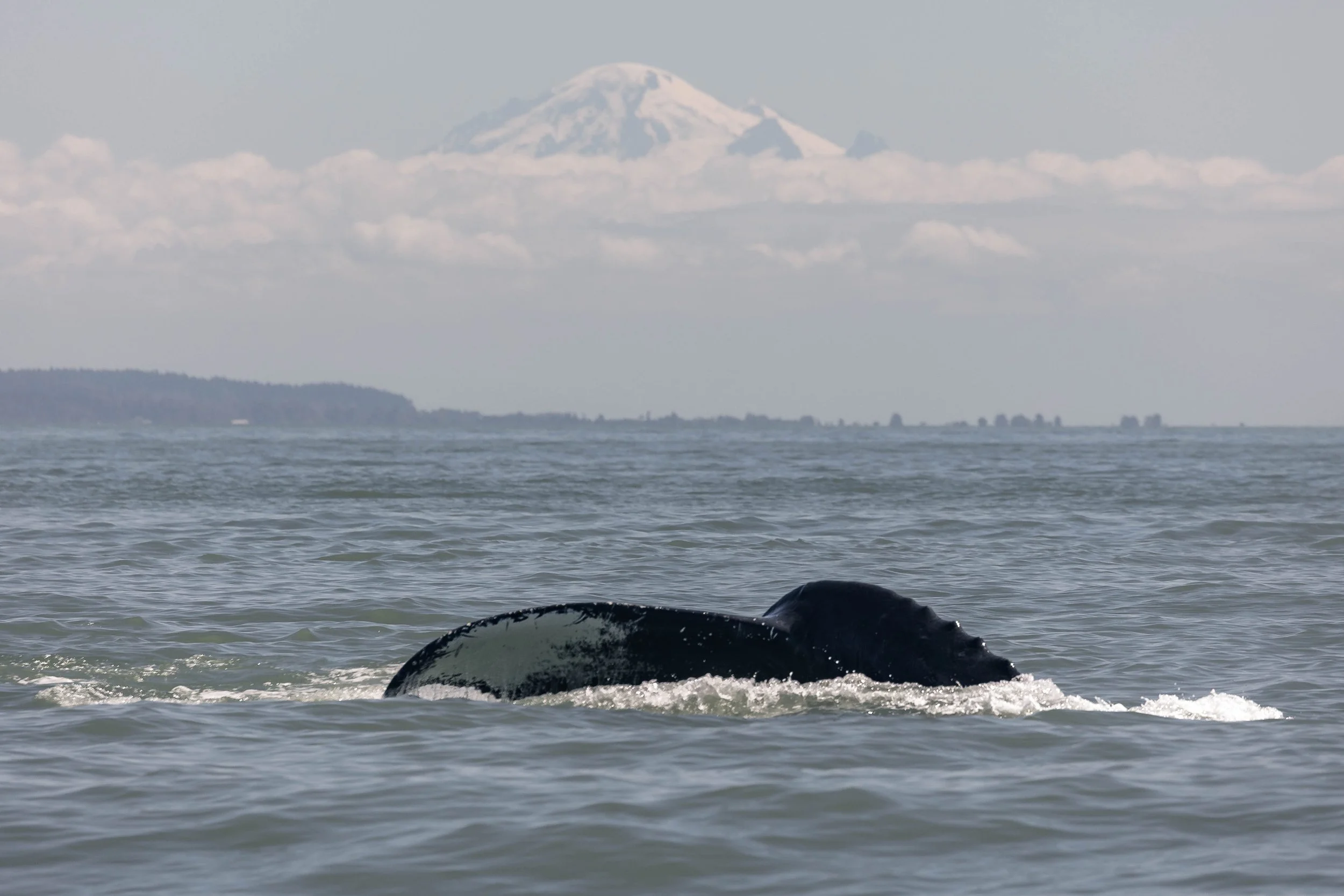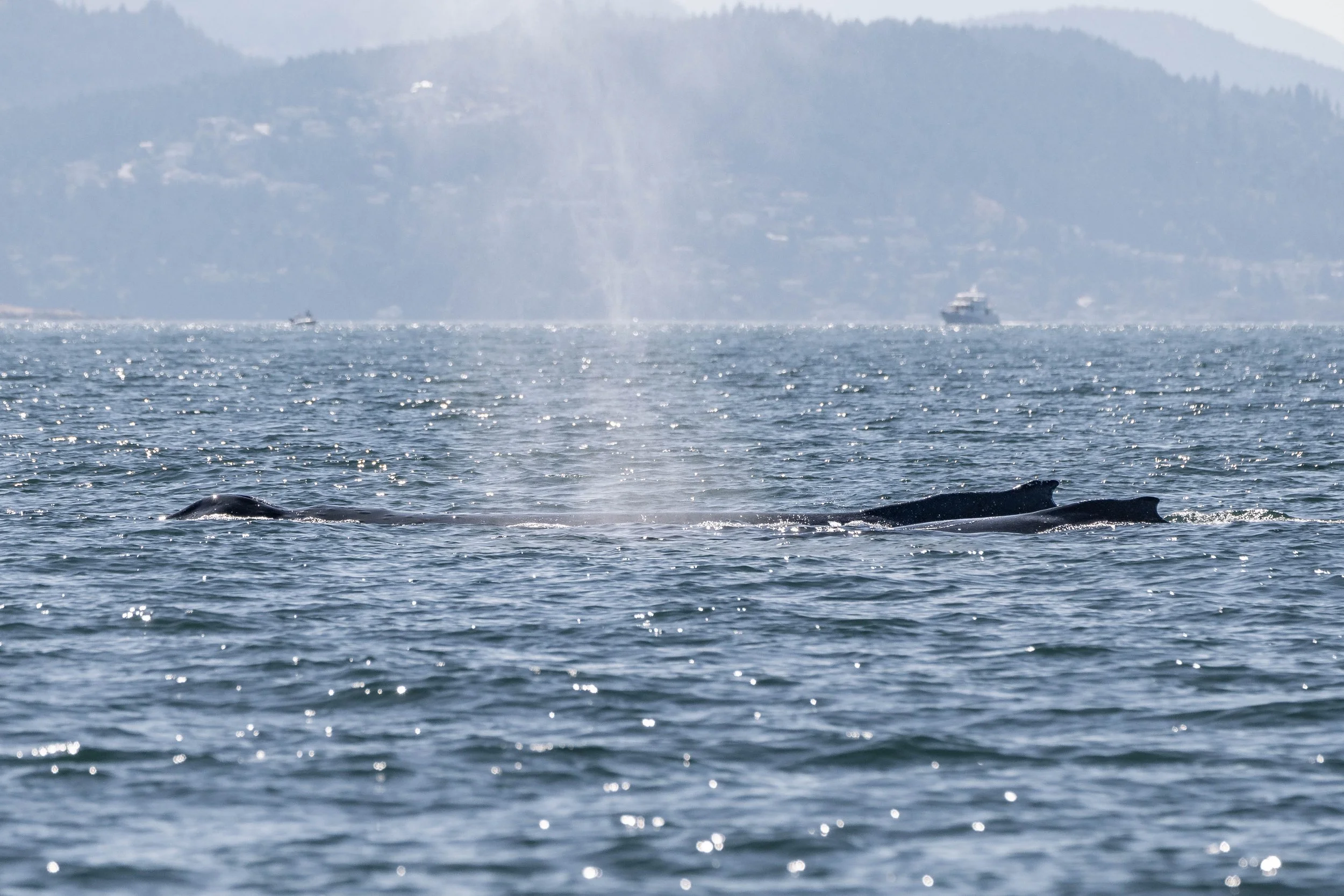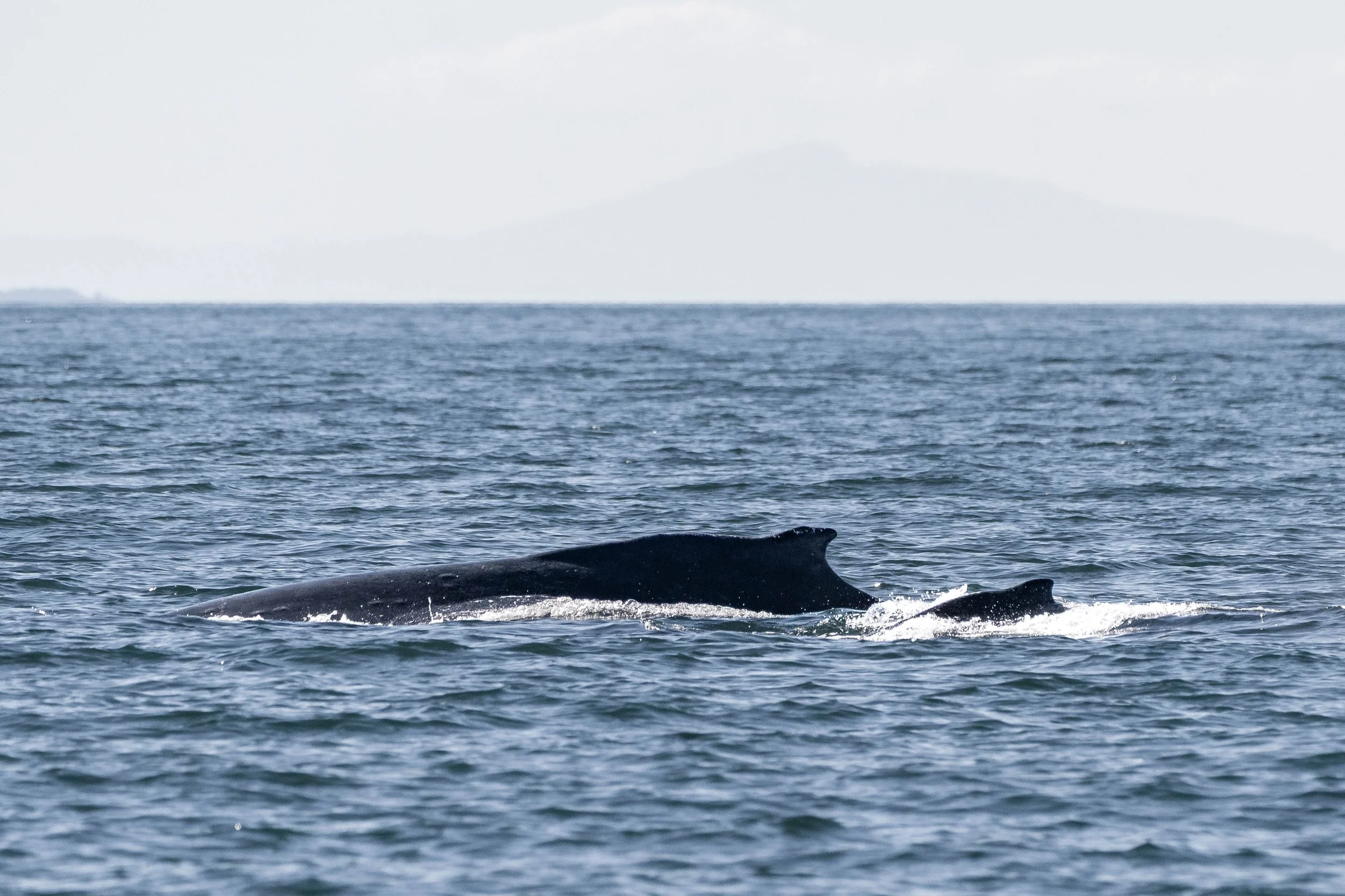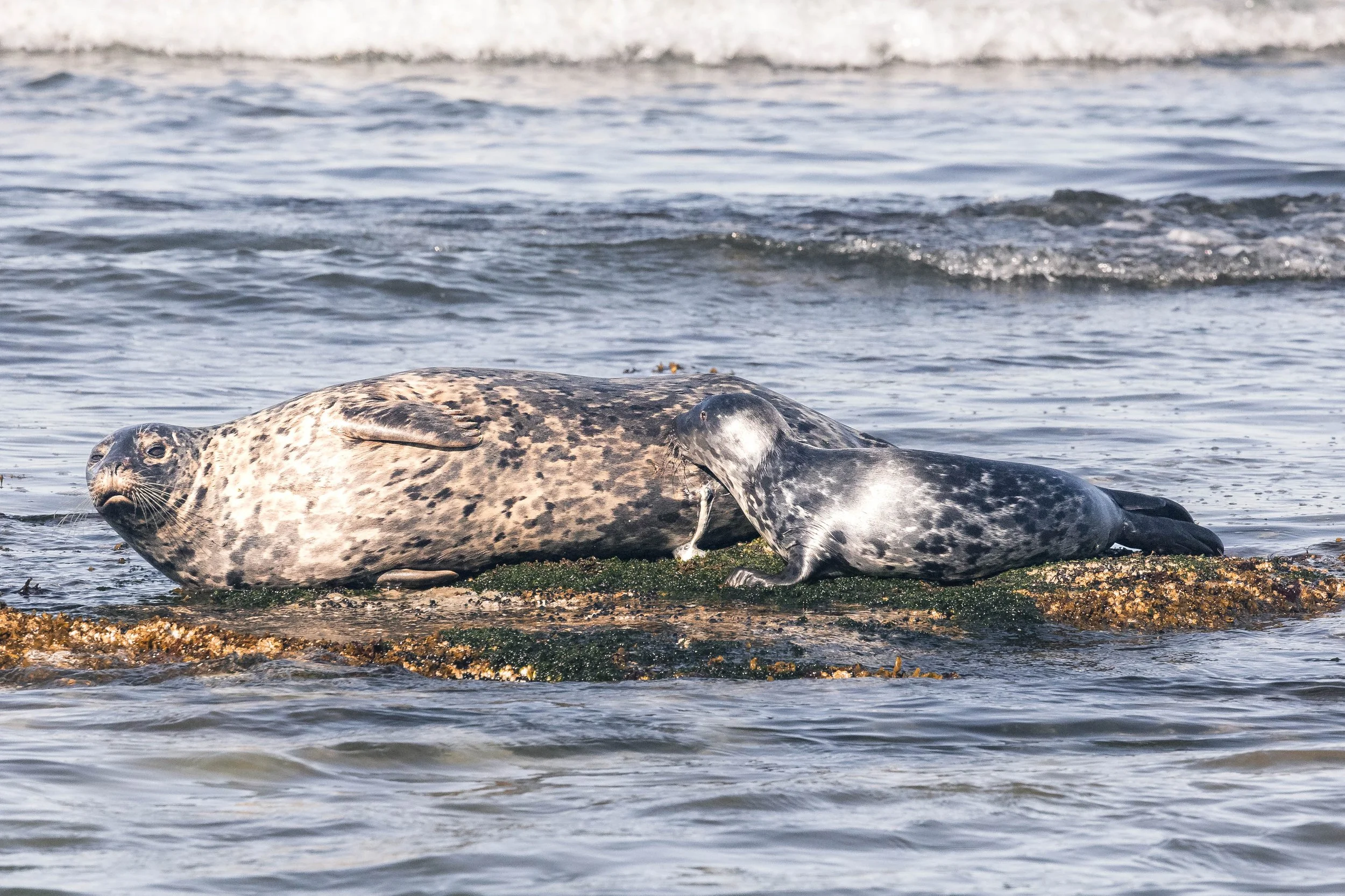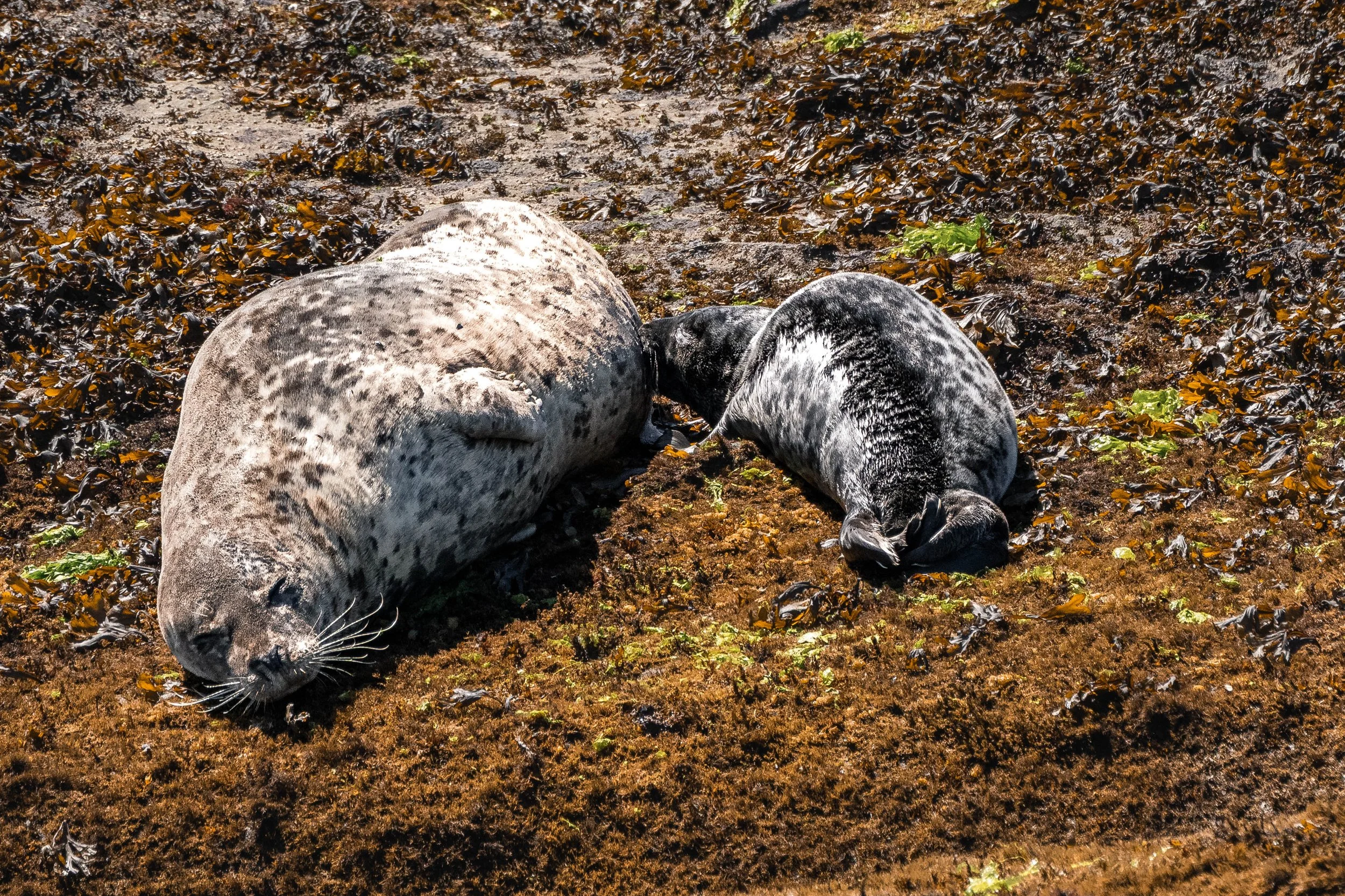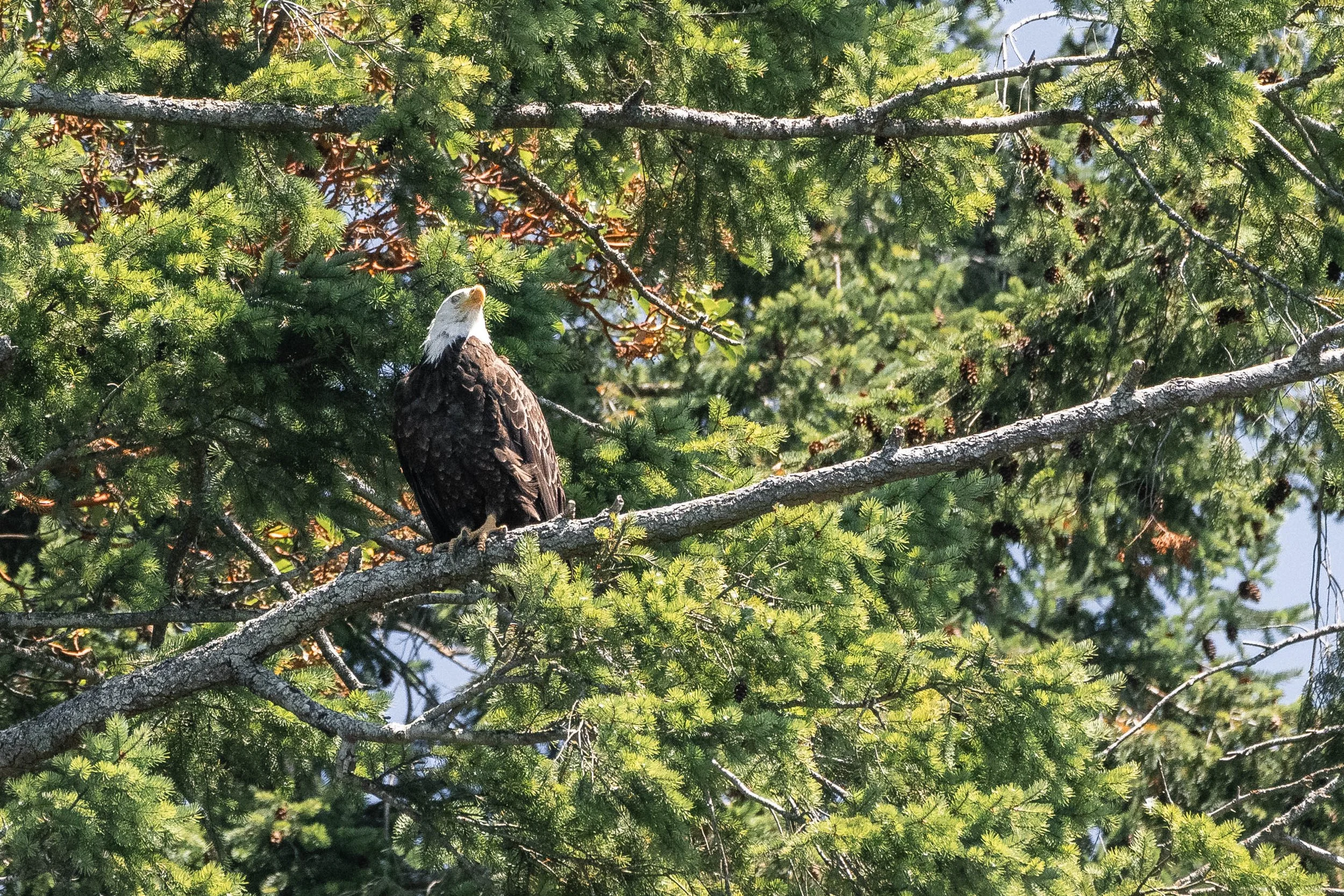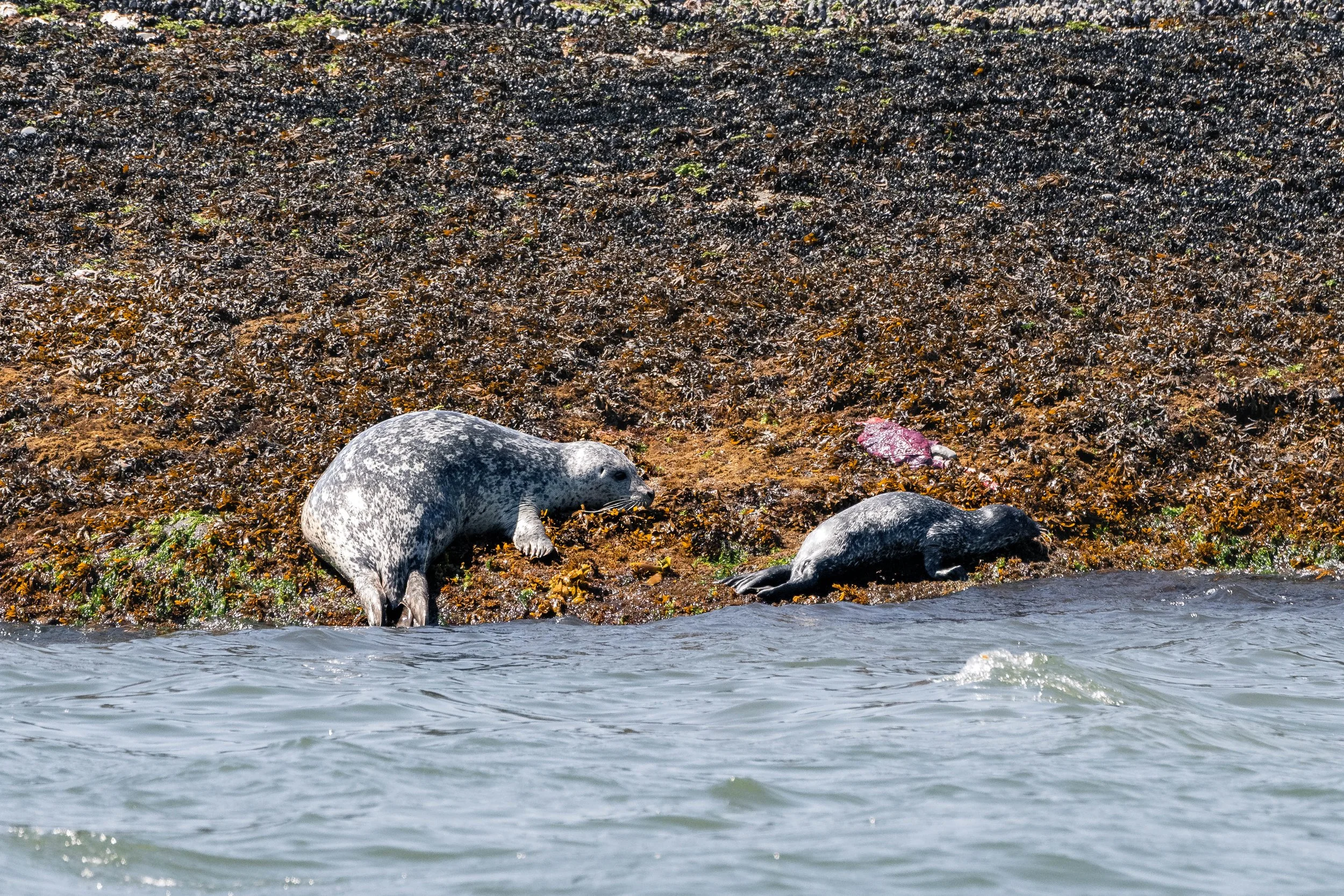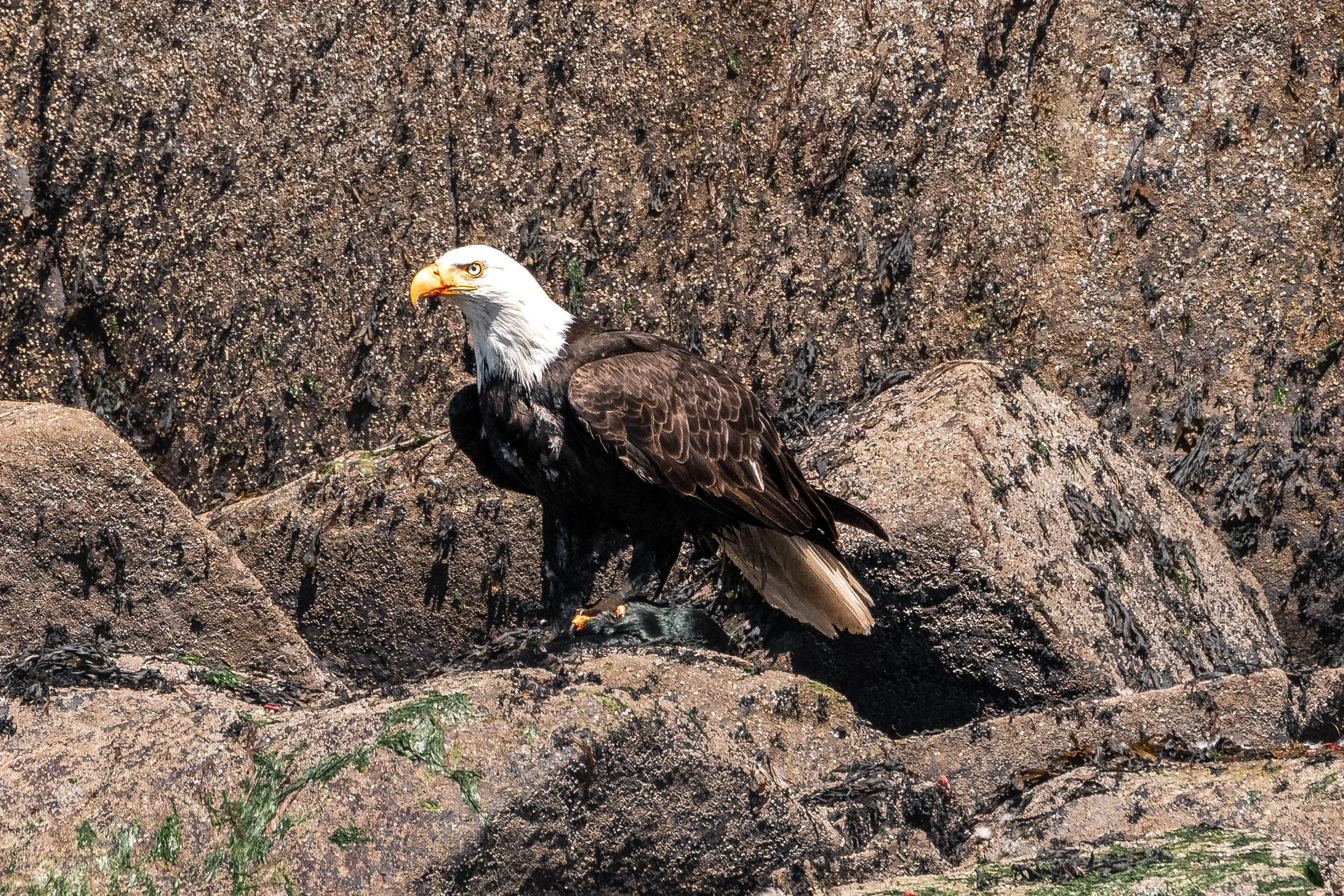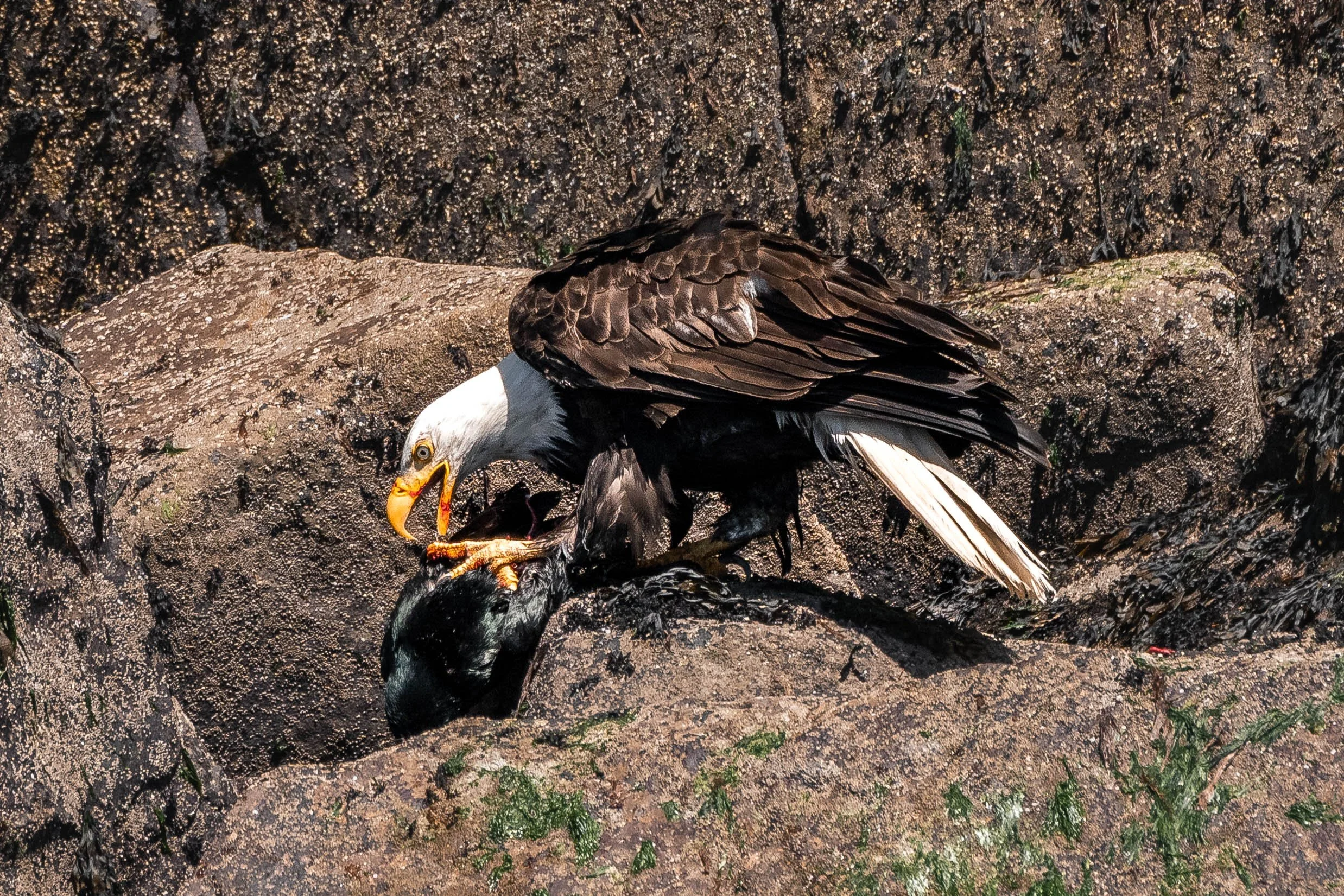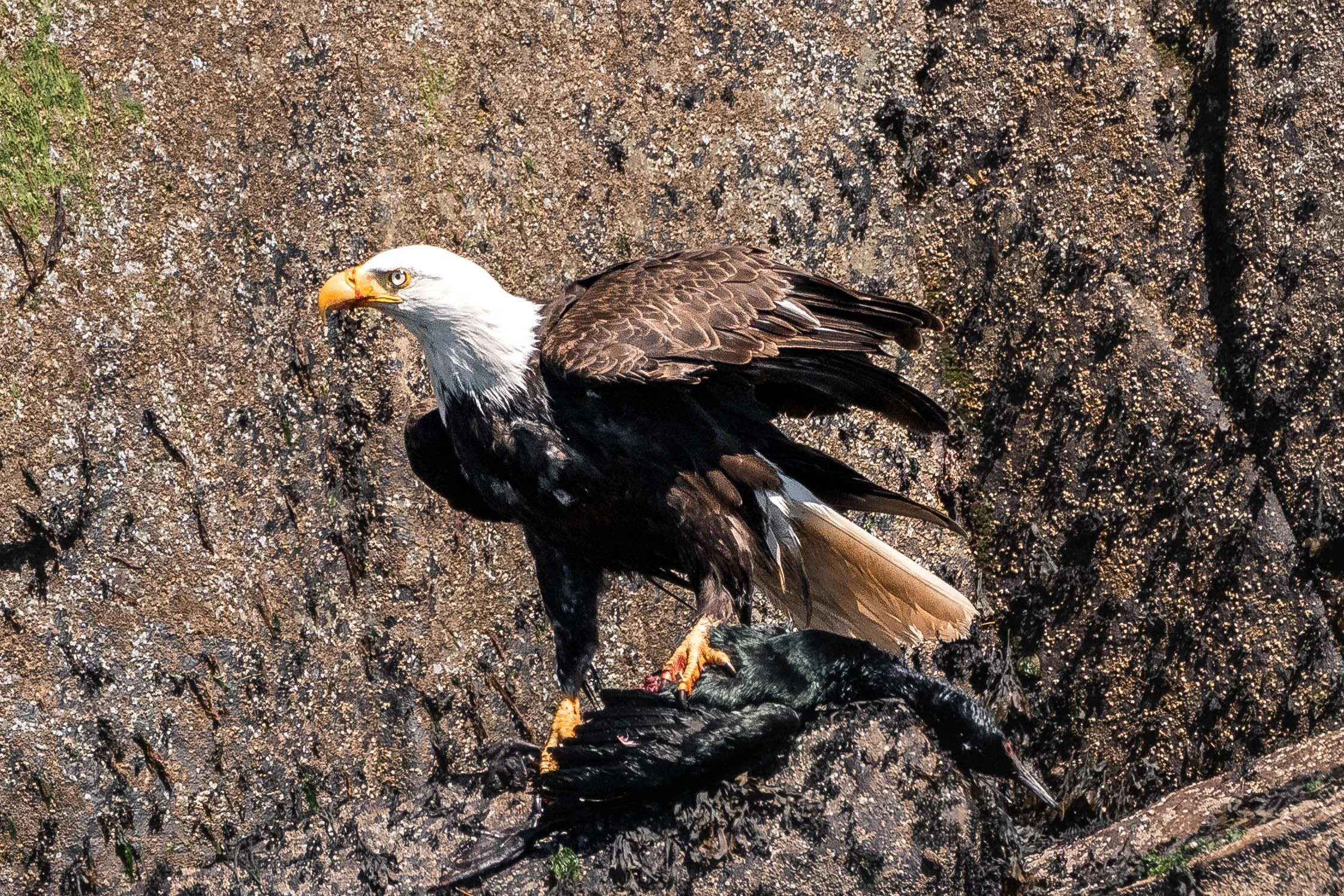July 12, 2025 - Hanging out with Humpbacks off Gabriola Island
Today, two of our vessels set off from the dock! The sun was high and bright as our vessels entered the Strait of Georgia, searching the horizon for distant whale blows or tail flukes.
Not long after reaching the north shore of Gabriola Island, our morning vessels spotted a lone humpback! Upon further inspection, the humpback was identified to be none other than Anvil (BCZ0410)! This female humpback was first identified in 2011 here in British Columbia. She spends her winters down in Hawaii and returns here in the summer to feed. Anvil is well known in this area, with frequent sightings out in the Salish Sea. We know Anvil is a female because she’s brought back two baby whales in the last 3 years! Anvil arrived with her first calf in 2022 (2022 Calf of BCZ0410) and her second calf in 2024 (2024 Calf of BCZ0410). Interestingly, humpback whales have very long pregnancies, reaching upwards of a 12-month gestation! Calves are born in their southern breeding grounds and travel northward and back with their mom for their first season. A baby humpback whale will nurse off their mother for around a year, after which the two animals will part ways.
After spending some time with Anvil, some more blows had been spotted close by! A trio of humpbacks had presented themselves, being Incognito (BCX2053), Hammer (BCY1222), and Barge Boy (KEX0078)! Hammer and Barge Boy were hanging out together while Incognito was a bit further off from the others. These humpbacks could be seen throwing up their signature tail flukes before heading down for their deeper feeding dives. Humpbacks can dive down as deep as 700 metres! Typically, when they are feeding, they only need to go around 200 feet to find their favourite food, Krill. These humpbacks are eating upwards of 3000 pounds (or a ton and a half) of food a day! They need to pack on the pounds for their winter migration because when these animals head south, they won’t be eating. That means that humpbacks go upward of 6 months without feeding!
The evening tour was in for a real treat, as we rounded the north end of Gabriola, we also found some humpbacks! Two in particular were exciting because it was Graze (BCY0523) and her new calf (2025 Calf of BCY0523)! It’s always exciting getting to see a mother humpback with her calf! In addition to Graze and her baby, we were also joined by Slits (BCY0946)! Slits brought back her very first calf last season (Ulli, 2024 Calf of BCY0946), meaning we could confidently identify her as a female humpback whale.
After enjoying our humpback company, our vessels continued to observe some seals and sea lions! Our next stop was a rock outcrop off the outer shore of Valdes Island, dubbed “Stinky Rocks” by those who visit. Those unfortunate enough to be downwind of the Sea lions stationed there get to find out why the rock has this nickname! Since there are so many animals eating, sleeping, feeding, and defecating together on one small rock, the smell is as bad as you imagine it to be!
The Steller Sea Lions that haul out there are the largest species of sea lion in the world! Female Steller Sea Lions only grow to be one-third the size of mature males, with males reaching 11 feet long and weighing upwards of 2500 pounds, whereas females max out at around 800 pounds and reach 8 feet long. When males and females of a species have distinct physical differences, the species is said to exhibit sexual dimorphism. The size difference is a crucial advantage for the males during the breeding season, which runs from late May to mid July. These large dominant males must claim and defend their harem of females from other large competing males. Once a male has secured his harem, he will stay on land and defend his group from other males for the rest of the breeding season, meaning that he won’t get the opportunity to feed for upwards of 2 months! But this fast is essential for the dominant male to secure reproductive success.
Additionally, on a nearby rock were some skittish Harbour Seals! These seals only weigh up to 280 pounds and grow to be 6 feet long. Males and females are pretty indistinguishable from each other, unlike sea lions. The snout of harbour seals is shorter and more blunt when compared to that of sea lions. These cute little pinnipeds are considered true seals because they belong to a different evolutionary lineage compared to sea lions. One of the key differences lies in their anatomy: true seals lack external ear flaps (pinnae) and have smaller front flippers. Additionally, their pelvic bones are fused, which limits their ability to move on land, but it gives them a powerful advantage in the water. This adaptation enhances thrust and agility, crucial when evading their primary predator: the killer whale. It is also pup season, and we saw several cute baby faces amongst the adults!
Once we departed Stinky Rocks, our vessels headed towards a Bald Eagle nest on the southwest side of Gabriola Island. After 5 years, bald eagles transition from their juvenile brown head towards their iconic white head. Additionally, juveniles will lose their white splotches on their body and tail, developing dark-brown bodies and white tail feathers. As bald eagles age, their feathers are not the only thing changing colour! The eyes of immature bald eagles will initially appear brown or grey and change to a stunning yellow as they age. The diet of bald eagles can vary, but consists of fish, small mammals and other birds (as seen below…Gore Warning tag is listed below in case you do not want to see the Bald Eagle with its catch)!
Not far from the Bald Eagle nest, some other birds were taking advantage of the unique sandstone formations on the bluffs of Gabriola Island. As the sandstone rock wears down, it creates caverns and cliffs perfect for cliff-nesting birds such as Cormorants, Pigeon Guillemots and Cliff Sparrows. A majority of the birds viewed on the rocky bluffs are Double-Crested Cormorants and Pelagic Cormorants, which build their nests out of twigs, driftwood and seaweed.
Enjoy our photos below, taken by our Marine Naturalists Val Watson and Jordan Robinson.
Anvil’s dorsal fin. Photo by Val Watson, 10:30 AM.
Hammer (back) and Incognito (front). Photo by Val Watson, 10:30 AM.
Hammer beginning to dive. Photo by Val Watson, 10:30 AM.
Hammer’s dorsal fin. Photo by Val Watson, 10:30 AM.
Water cascading down a fluke! Photo by Val Watson, 10:30 AM.
Incognito’s dorsal fin. Photo by Jordan Robinson, 10:30 AM.
Hammer fluking, with Mt.Baker behind them. Photo by Jordan Robinson, 10:30 AM.
Barge Boy’s fluke. Photo by Jordan Robinson, 10:30 AM.
Barge Boy fluking. Photo by Jordan Robinson, 10:30 AM.
Hammer’s fluke. Photo by Jordan Robinson, 10:30 AM.
Hammer starting to dive. Photo by Jordan Robinson, 10:30 AM.
A beautiful dive from Hammer. Photo by Jordan Robinson, 10:30 AM.
Graze (back) and her 2025 calf (front). Photo by Val Watson, 3:30 PM.
Graze looks so big compared to her tiny calf! Photo by Val Watson, 3:30 PM.
Graze fluking with her calf just barely visible beside her. Photo by Val Watson, 3:30 PM.
Slits starting to arch for a dive. Photo by Val Watson, 3:30 PM.
Slits’ fluke. Photo by Jordan Robinson, 3:30 PM.
A nursing Harbour Seal and its mother. Photo by Jordan Robinson, 3:30 PM.
A sleepy Harbour Seal with her tiny pup beside her. Photo by Val Watson, 10:30 AM.
Snack time for the pup! Photo by Val Watson, 10:30 AM.
Standing loud and proud at Stinky Rocks. Photo by Jordan Robinson, 10:30 AM.
Getting the stink eye at Stinky Rocks. Photo by Jordan Robinson, 3:30 PM.
Asserting his dominance over the others. Photo by Jordan Robinson, 3:30 PM.
Cormorants nestled in for the evening. Photo by Val Watson, 3:30 PM.
Shuffling along the cliffside. Photo by Jordan Robinson, 3:30 PM.
A Pelagic Cormorant flying by. Photo by Val Watson, 10:30 AM.
A classic Pigeon Guillemot shot as it comes in for a water landing! Photo by Val Watson, 3:30 PM.
A mature Bald Eagle rests high in the trees. Photo by Val Watson, 10:30 AM.
One of the Eaglets watching us curiously. Photo by Jordan Robinson, 10:30 AM.
3 boats in one shot! Kula, our semi-covered vessel, with two BC Ferries in the background. Photo by Jordan Robinson, 10:30 AM.
GORE WARNING
We spotted an eagle eating a Cormorant while on tour - viewer description advised. There was also a VERY fresh seal pup spotted, with the placenta still visible - this is also listed below for those who may not want to see it!
This pup is very new - so new, that you can spot the placenta behind it! Photo by Val Watson, 10:30 AM.
A Bald Eagle, beak bloodied, standing on top of its meal. Photo by Val Watson, 10:30 AM.
Digging in. Photo by Val Watson, 10:30 AM.
A Cormorant this size will provide a lot of nutrients for this Bald Eagle (and Eaglets if it brings it back for any kids!). Photo by Val Watson, 10:30 AM.
The circle of life. Photo by Val Watson, 10:30 AM.


